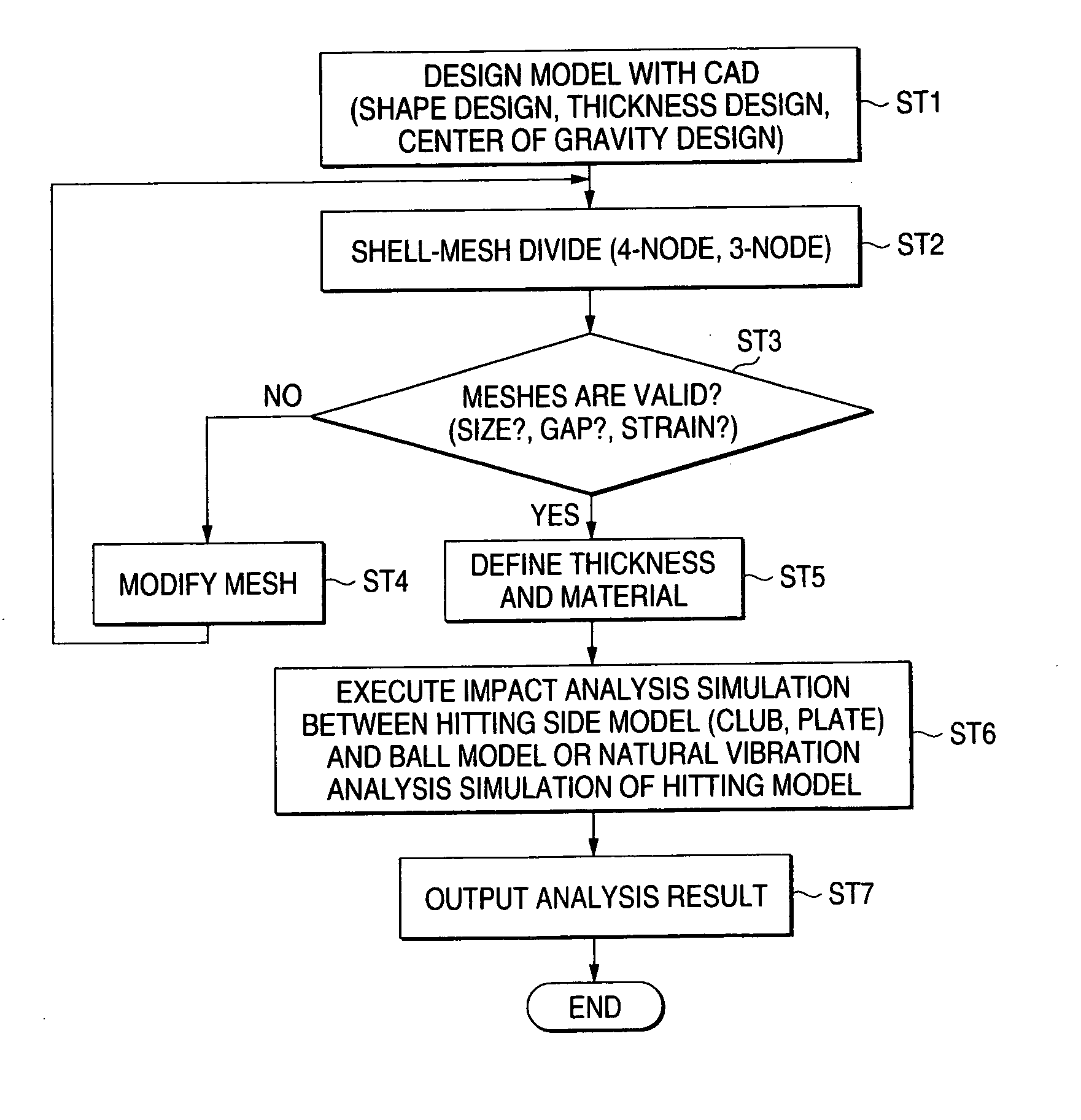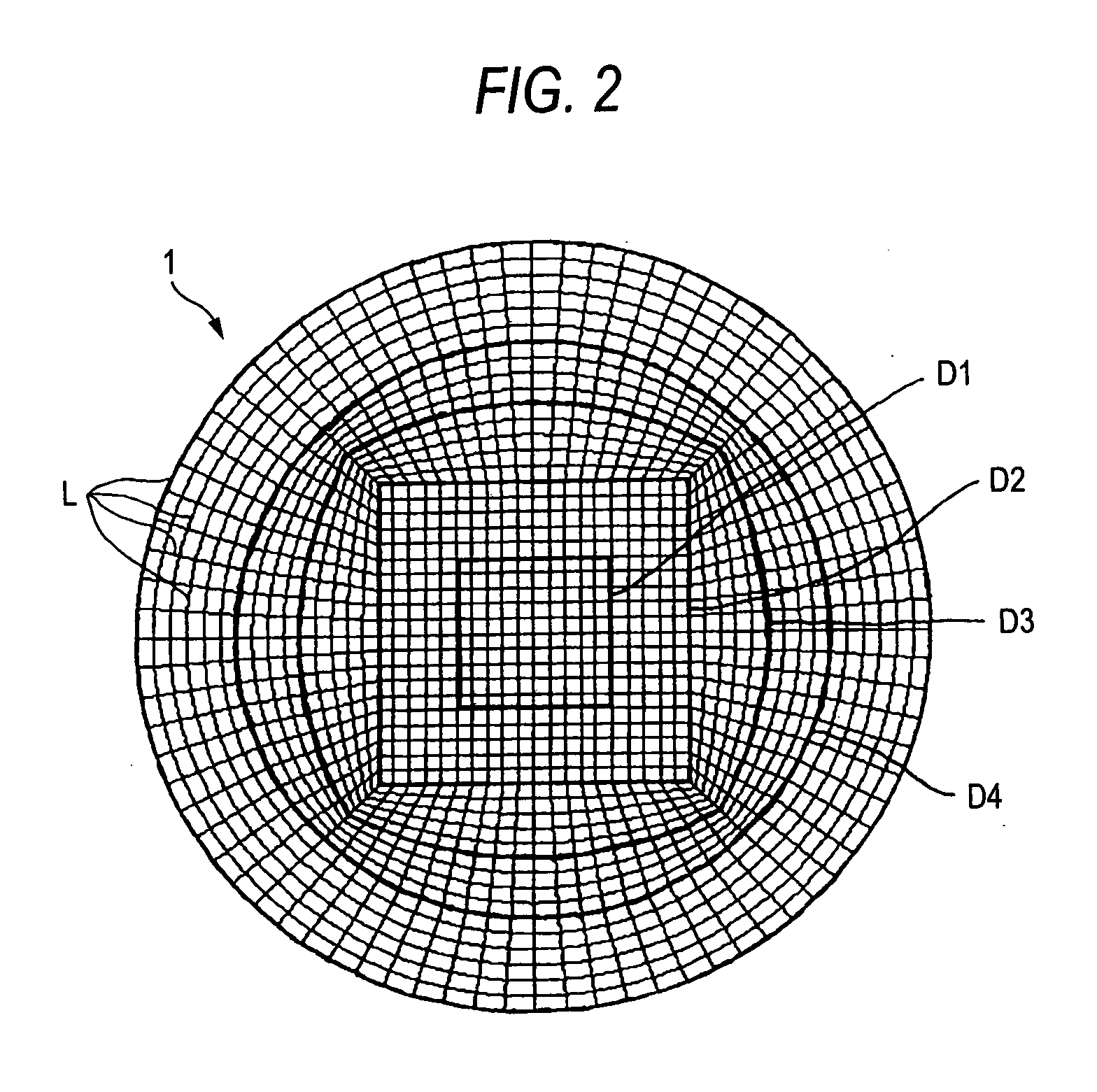Method for simulating performance of golf club head
a golf club head and performance simulation technology, applied in the field of golf club head simulation, can solve the problems of difficult to set the shell element on the recent club head model, and increasing the number of finite elements, and achieve the effect of short calculation time and high accuracy
- Summary
- Abstract
- Description
- Claims
- Application Information
AI Technical Summary
Benefits of technology
Problems solved by technology
Method used
Image
Examples
first example
(FIGS. 2 and 3)
[0035] In a first example, this embodiment of the invention is applied to a case where a plate model having, as shown in FIG. 2, a circular shape on a front side is used as a hitting model.
[0036] This plate model 1 is assumed to be used for a hitting surface of a golf club head. Mesh portions, which are divided up by innumerable fine dividing lines L, L in FIG. 2, are units of models to which the shell elements are applied. Then, the plate model 1 is divided into five annular areas from a central portion toward an outside thereof as shown by thick annular boundary lines D1 to D4. The plate model 1 is formed so that the thickness increases from the central portion to the outside thereof.
1) Number of Mesh Elements (Number of Finite Elements)
[0037] When the plate model 1 that is formed as has been described above was divided into models using four-node shell elements according to the method of this embodiment, the number of mesh elements (the number of finite eleme...
second example
(FIG. 4)
[0044] As shown in FIG. 4, a second example is applied to a wood model 2, which is the hitting side model.
[0045] In this wood model 2, mesh portions divided up by innumerable fine dividing lines L1, L1 shown in FIG. 4 are units of models to which shell elements are applied.
1) Number of Mesh Elements (Number of Finite Elements)
[0046] When the wood model 2 that is formed as has been described above was divided into models using four-node shell elements based on the method of this embodiment, the number of mesh elements (the number of finite elements) was 1,624. In this case, vector directions of the shell elements, which were applied to the respective mesh elements, were identical to each other. Shapes of the respective models (mesh elements) to which the shell elements were applied were identical to the counter shape of the wood model 2, which constitutes a shape to be required.
[0047] On the other hand, when the wood model 2 was divided into models using the solid elem...
PUM
 Login to View More
Login to View More Abstract
Description
Claims
Application Information
 Login to View More
Login to View More - R&D
- Intellectual Property
- Life Sciences
- Materials
- Tech Scout
- Unparalleled Data Quality
- Higher Quality Content
- 60% Fewer Hallucinations
Browse by: Latest US Patents, China's latest patents, Technical Efficacy Thesaurus, Application Domain, Technology Topic, Popular Technical Reports.
© 2025 PatSnap. All rights reserved.Legal|Privacy policy|Modern Slavery Act Transparency Statement|Sitemap|About US| Contact US: help@patsnap.com



